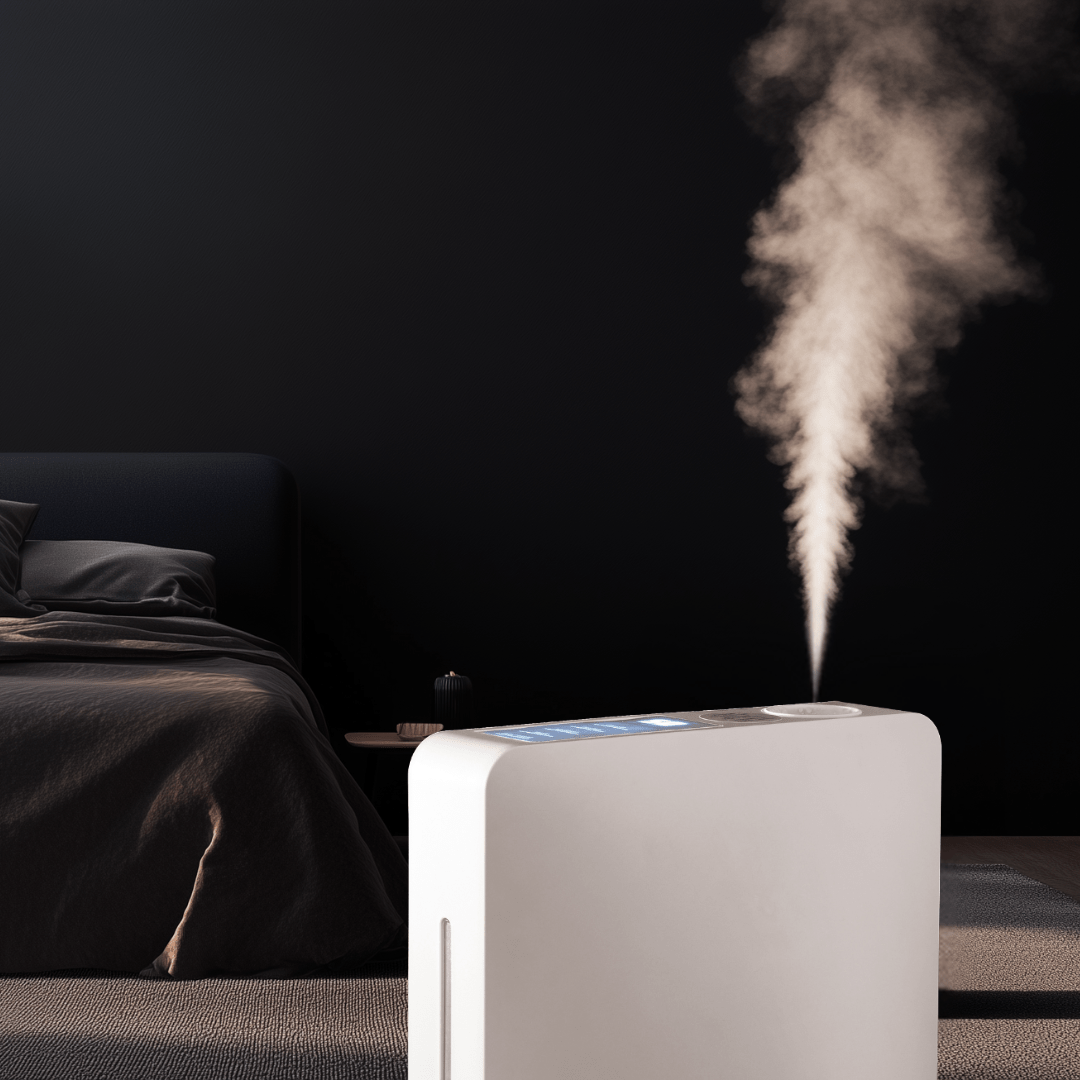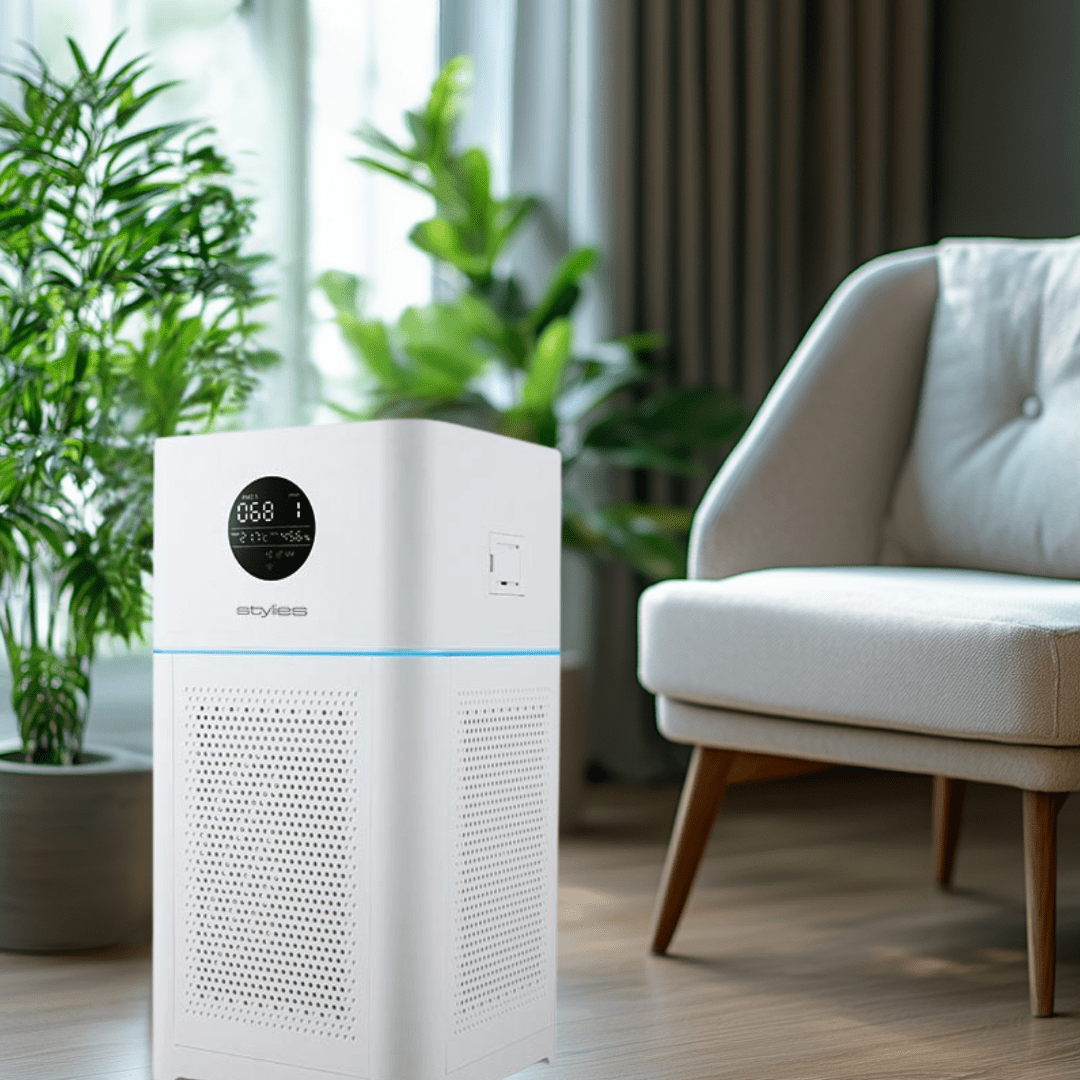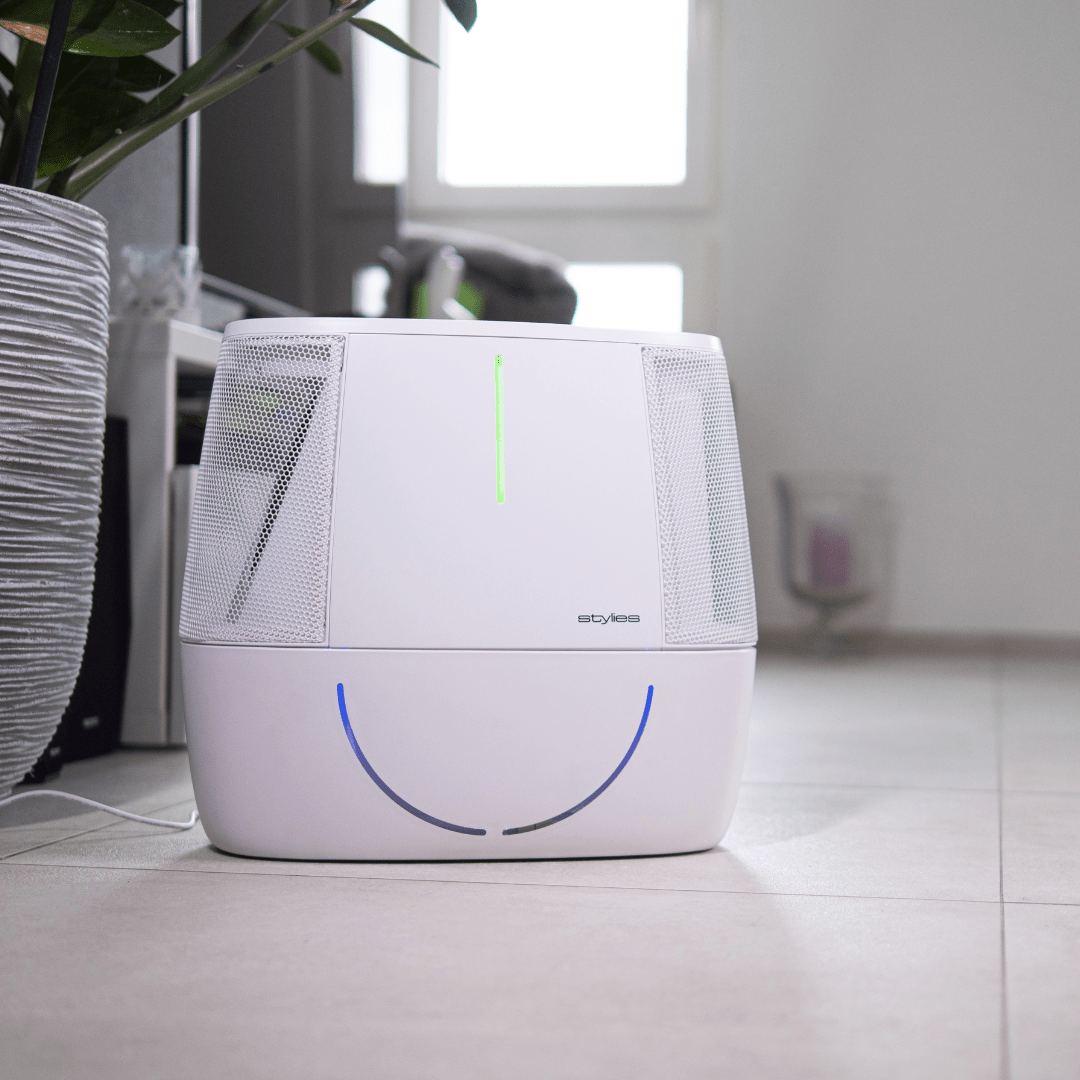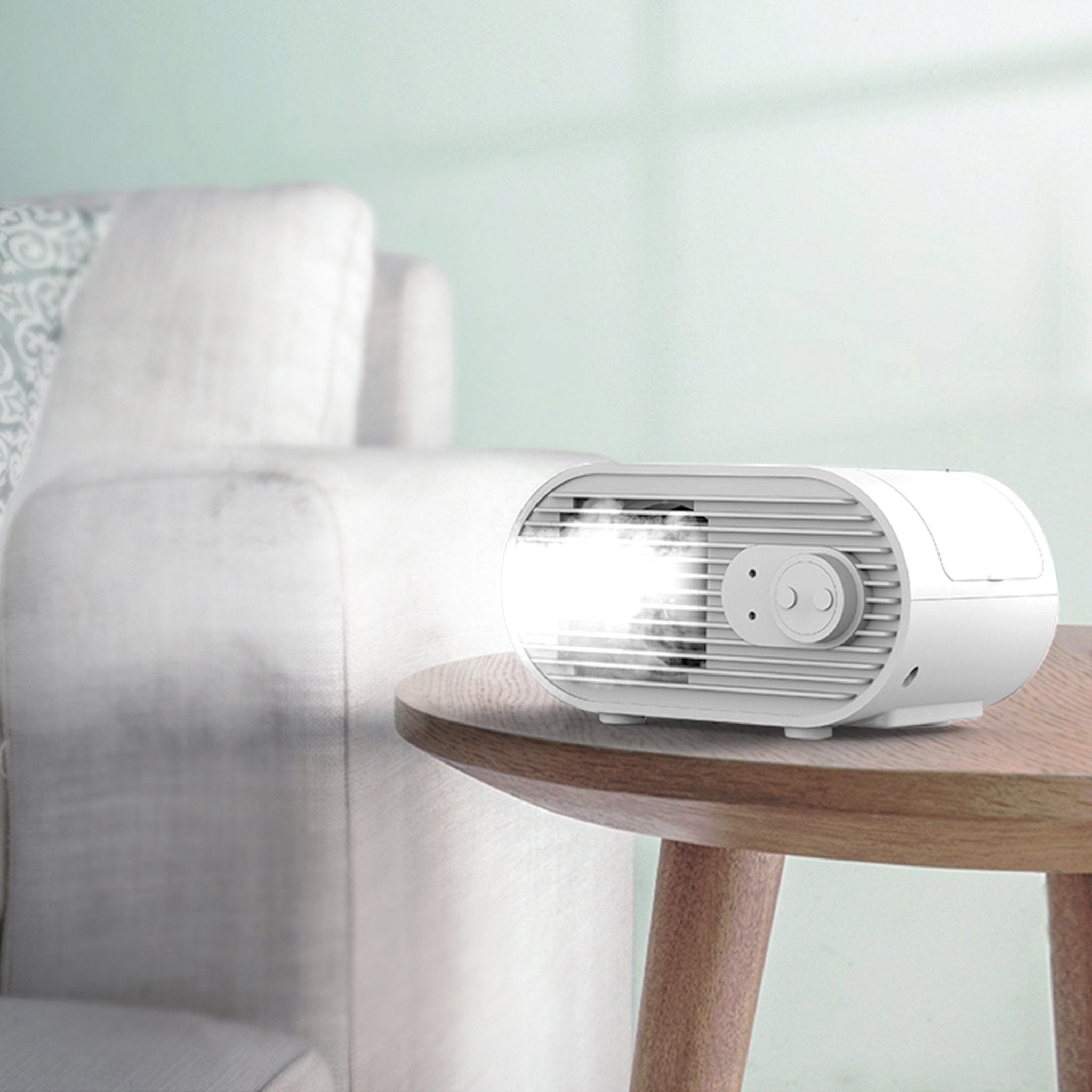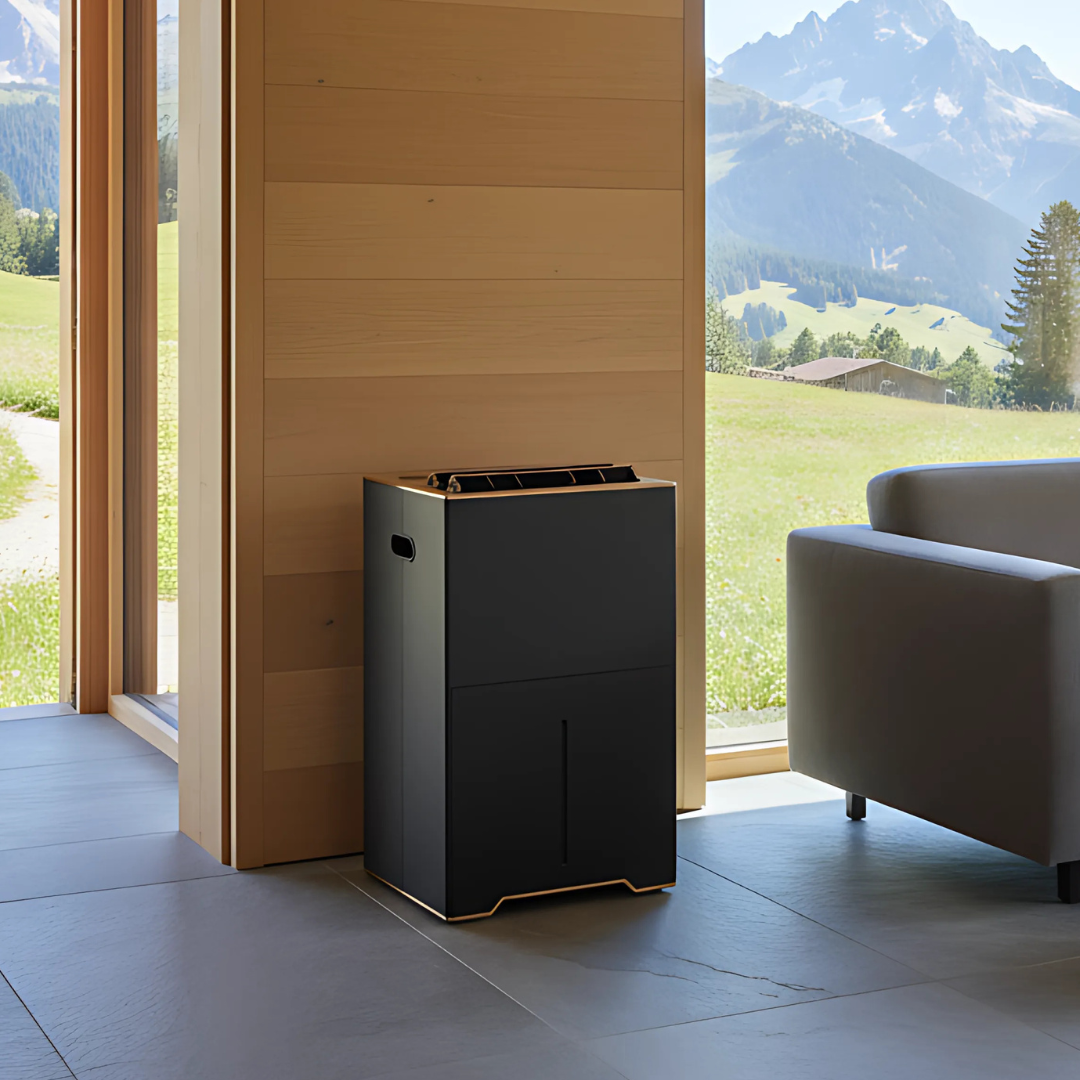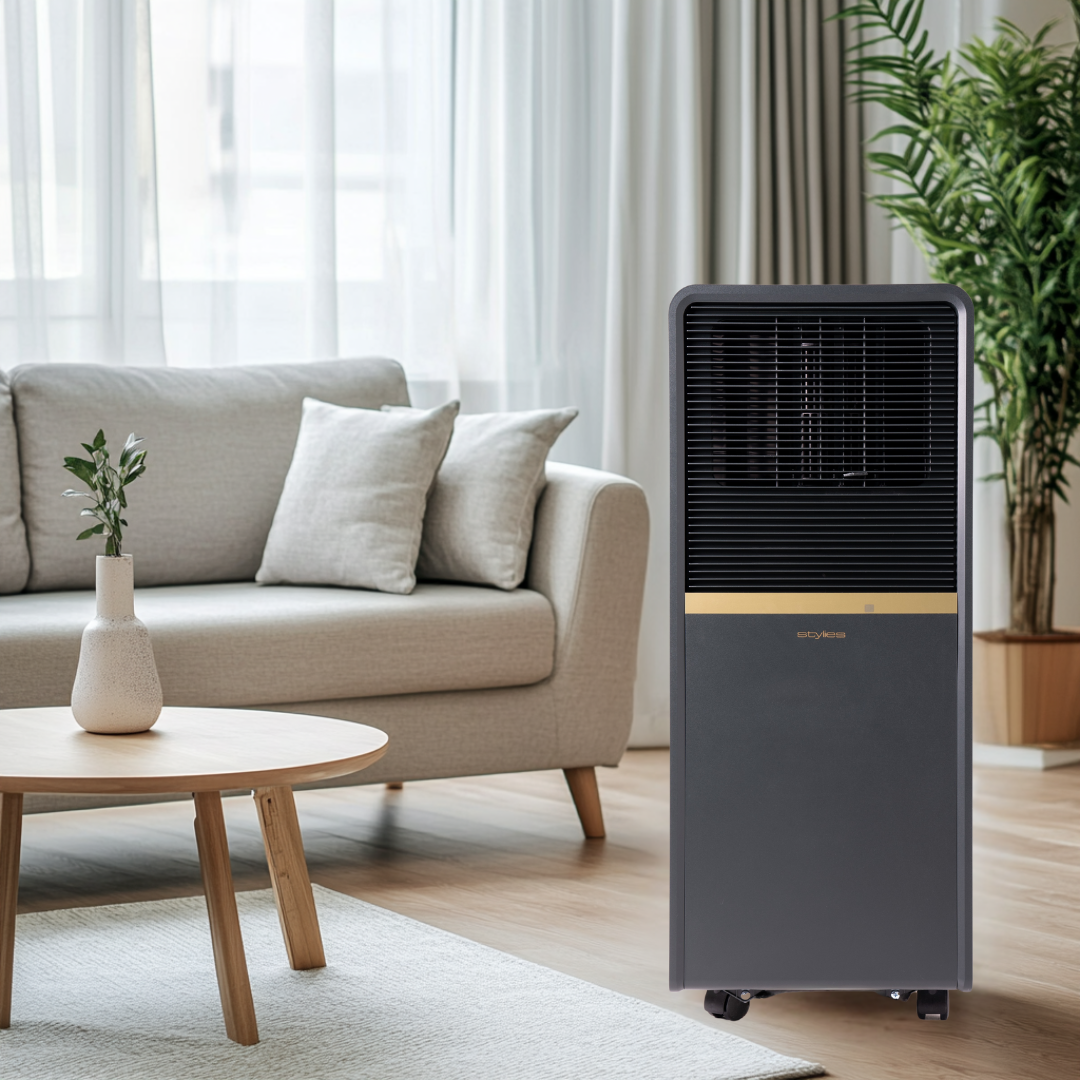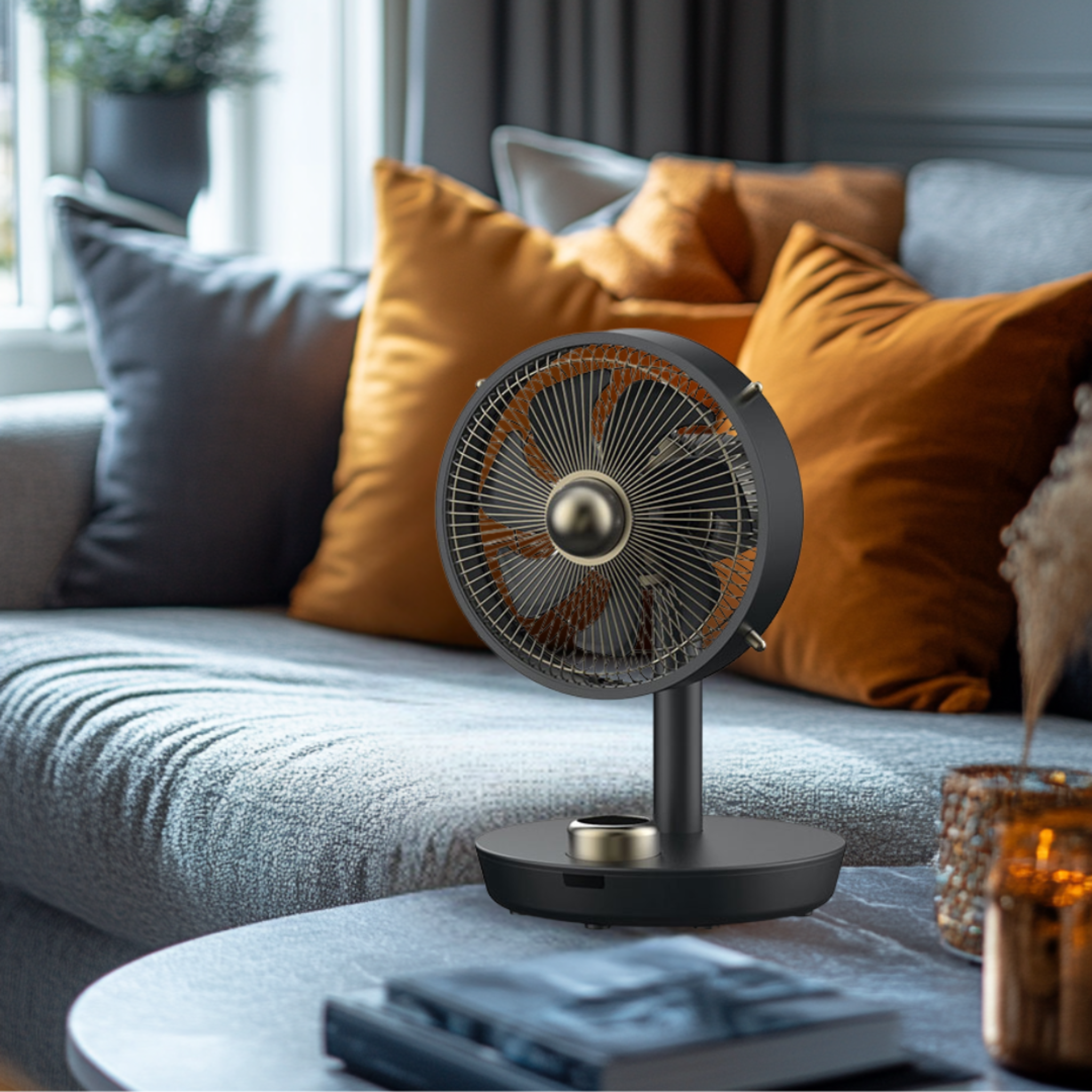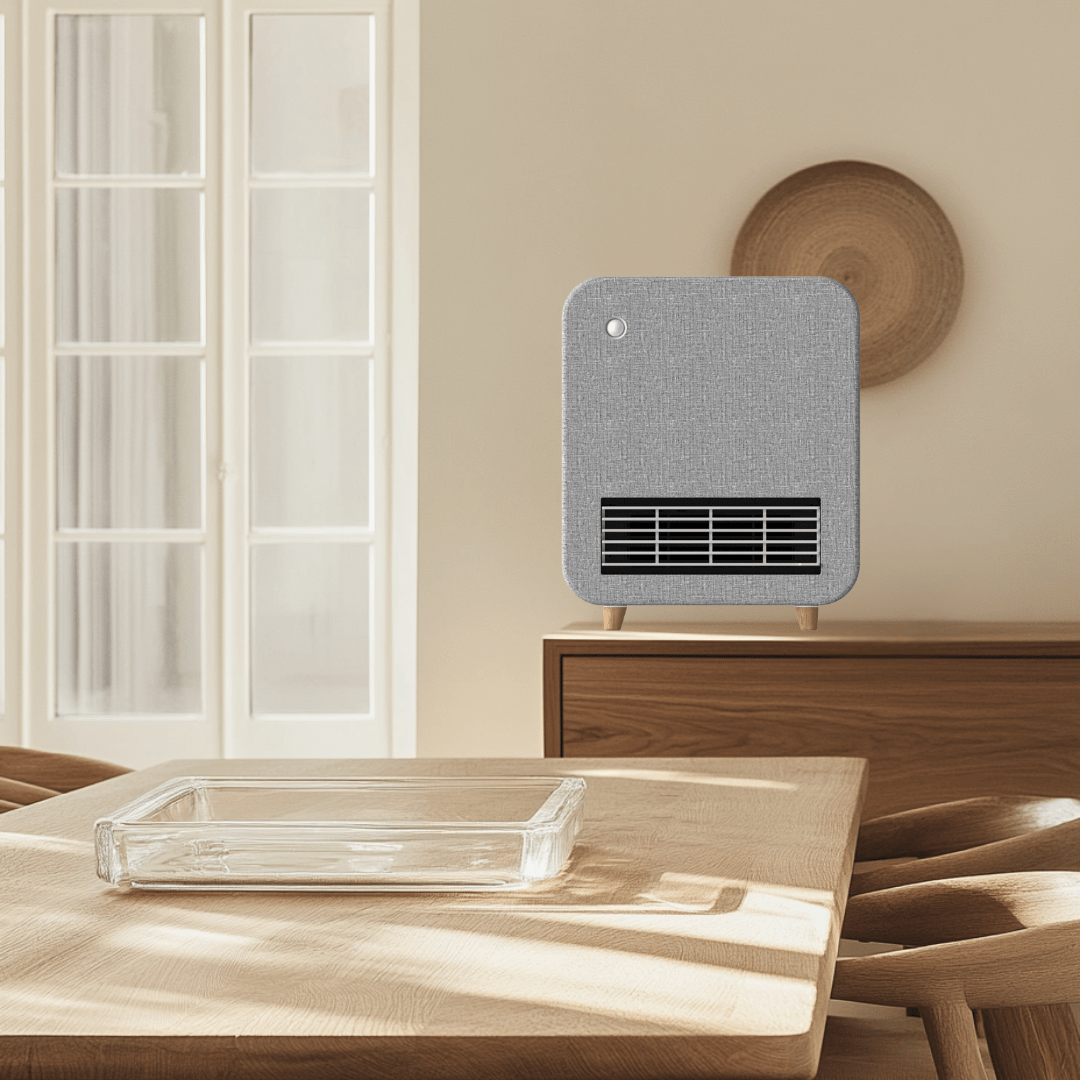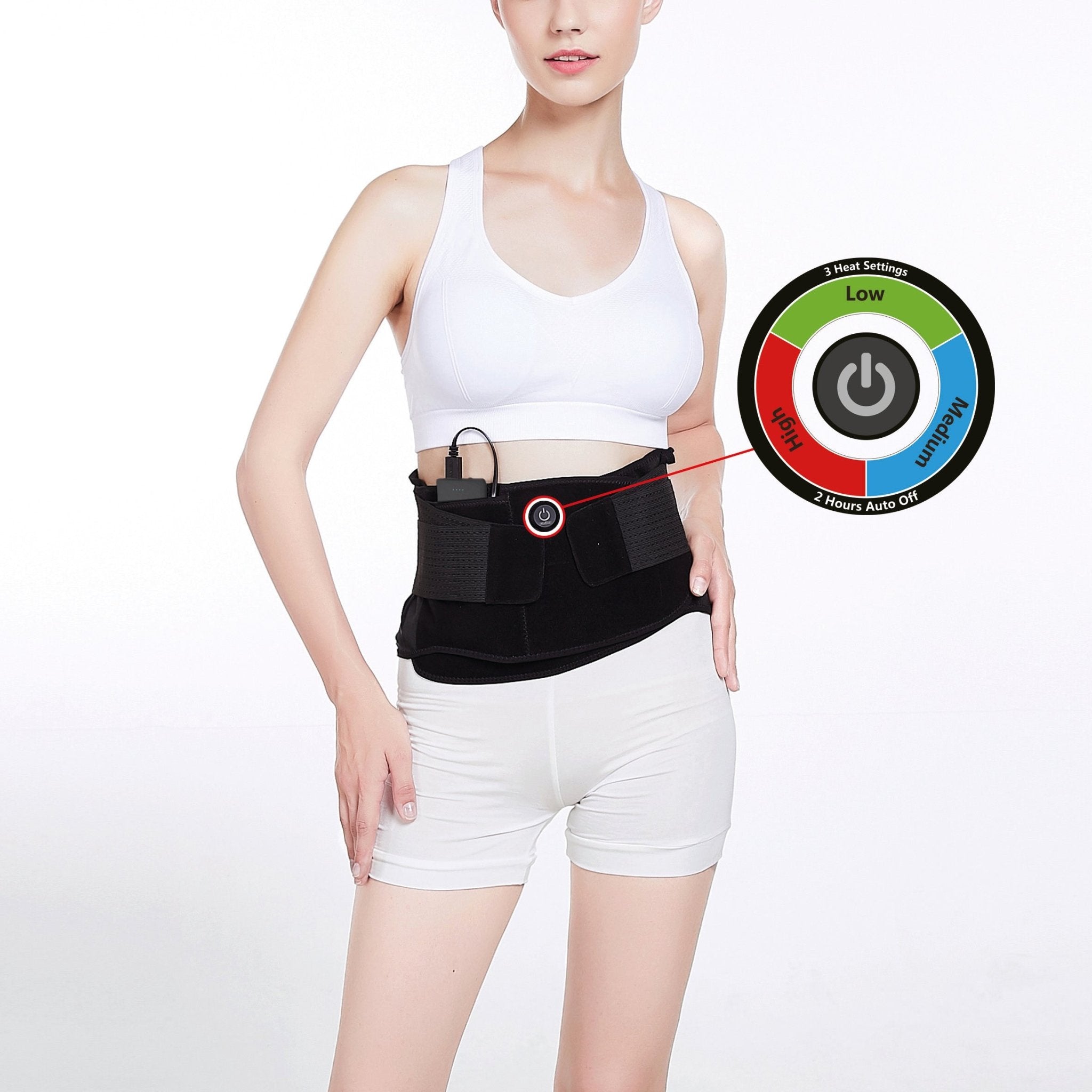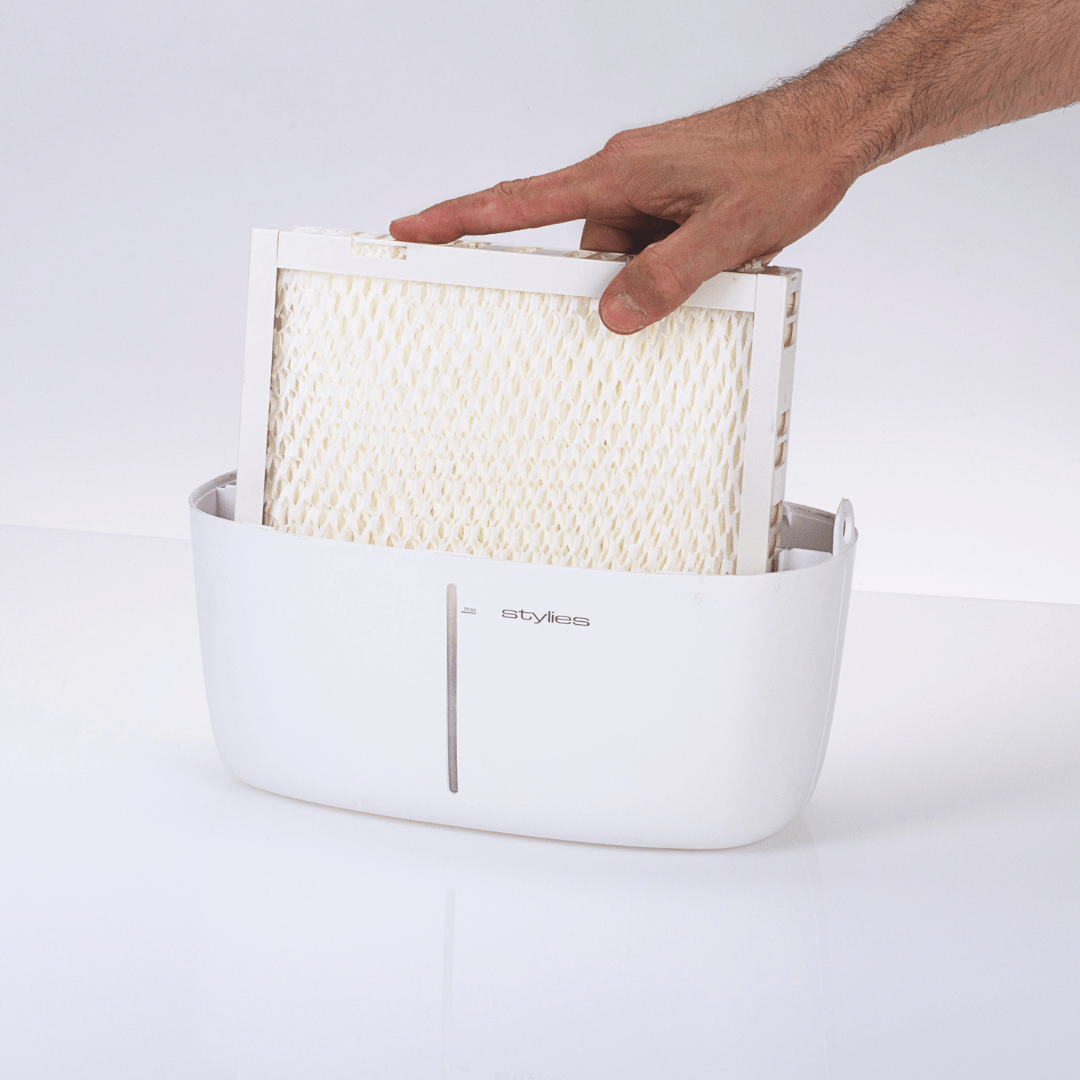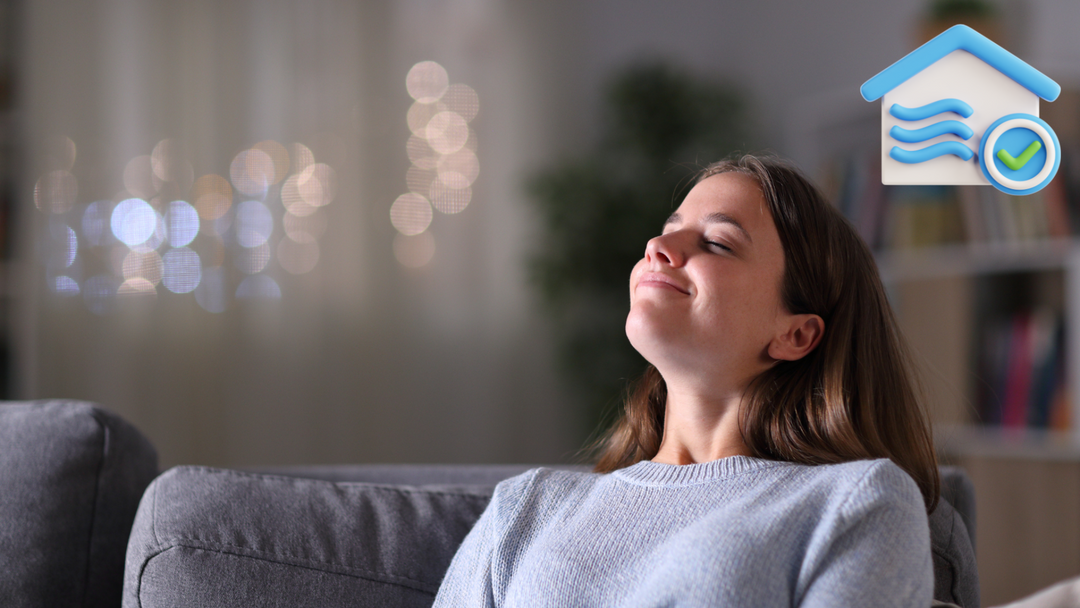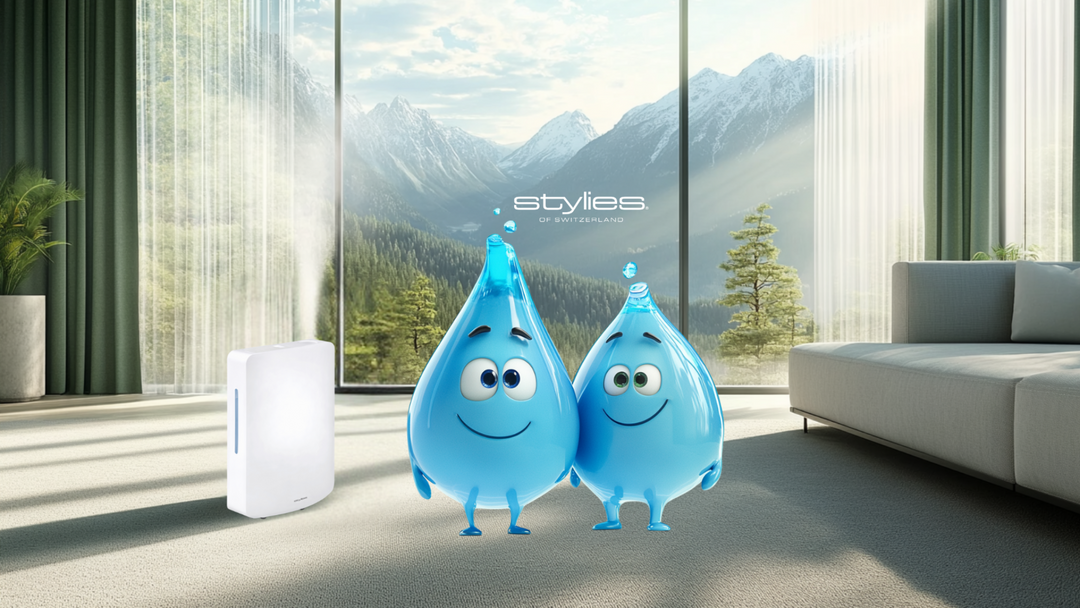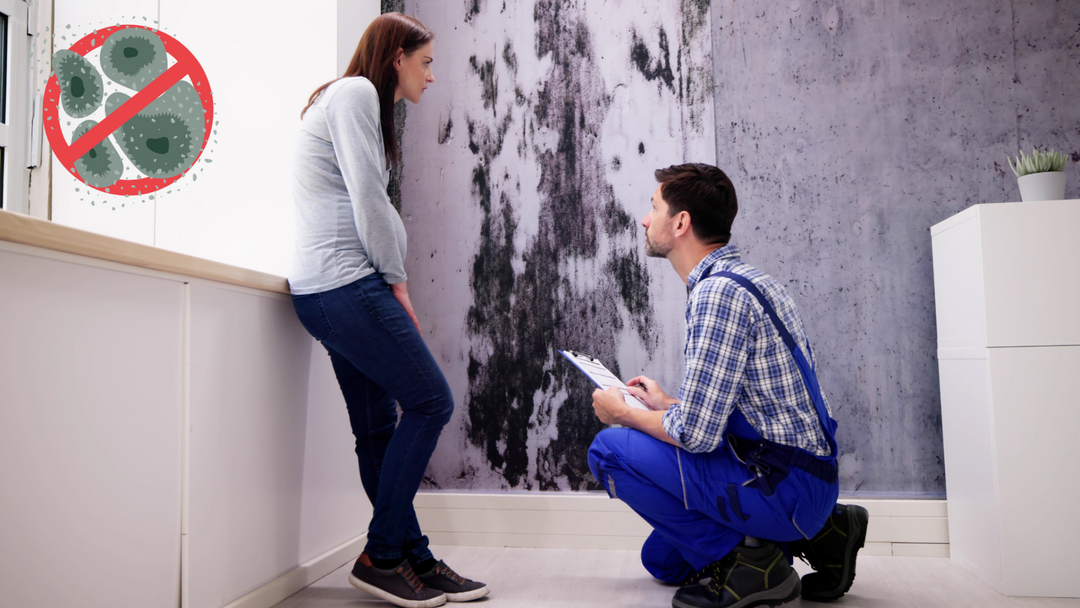Practical tips for combating pollen allergy
Why do we suffer from hay fever?
The small pollen is the male seed of plants and is often dispersed by wind or insects (pollen flight). In allergy sufferers, even a small amount of pollen is enough to alert the immune system. The body then releases histamine and other chemical messengers that trigger an inflammatory response – voilà, the sneezing and watery eyes begin.
Hay fever (allergic rhinitis caused by pollen) affects approximately 15% of the population – from school-age children to the elderly. Although pollen allergies rarely occur before the age of three, even older people can develop hay fever (the number of allergy sufferers over 65 has increased significantly in recent years). If left untreated, hay fever severely impairs quality of life and, in the worst cases, can lead to allergic asthma.
Below, you'll find comprehensive and practical tips for the pollen season—from natural home remedies to diet and everyday tricks to technical aids—to effectively relieve pollen allergy symptoms in children, adolescents, adults, and the elderly. (Note: These tips are not a substitute for medical treatment, but can be a useful supplement.)
Pollen allergy - Practical tips for relief for all age groups on the topic of hay fever
What is a pollen allergy?
With a pollen allergy , the immune system reacts to the otherwise harmless proteins in pollen. You then become hypersensitive to pollen from plants such as grasses, trees, or herbs. When inhaling or directly contacting the pollen, allergic individuals release histamine and other substances , which can lead to inflammation of the conjunctiva of the eyes and nasal mucosa.
The most common symptoms are:
- Runny or blocked nose (sometimes both at the same time – who hasn't experienced that?!)
- Red, itchy or watery eyes
- Cough or scratchy throat
- Fatigue and concentration problems
- Sneezing in a continuous loop
These symptoms are often collectively referred to as "hay fever"—although not everyone with hay fever has actually sniffed hay. If you have these symptoms, you're probably allergic to pollen. A pollen allergy that goes untreated for a long time can develop into allergic asthma, a condition known as "transient hay fever."
People who are allergic to pollen should be careful when eating fruits and vegetables, as 50% tend to develop a cross-allergy to botanically related foods.
House dust mites (their droppings) or animal hair can also trigger symptoms of a pollen allergy.
Natural remedies and home remedies for pollen allergy
Which tried-and-true home remedies and natural methods can help relieve allergy symptoms like a stuffy nose, itchy eyes, and respiratory problems? And what should you keep in mind?
Nasal rinses with saline solution
A proven home remedy for all ages (use with caution with small children). Rinsing the nose with an isotonic saline solution removes pollen from the irritated nasal mucosa, providing a soothing and decongestant effect. Nasal douches and saline solutions are available at pharmacies or drugstores.
Steam baths and inhalations
Inhaling hot steam (e.g., with a bowl and a towel over the head) moistens the airways and can loosen mucus. A few drops of essential oil (peppermint, eucalyptus, or fennel) also have expectorant and anti-inflammatory effects. However, caution should be exercised with essential oils in cases of asthma and with small children.
Herbal helpers
- Eyebright (Euphrasia): In the form of eye drops or tea, it soothes itchy, irritated eyes.
- Butterbur (Petasites hybridus) : Standardized preparations can reduce sneezing, runny nose, and itchy eyes.
- Black seed oil : One teaspoon daily (pure or in capsules) is traditionally described as helpful against allergy symptoms.
- Honey : Regional honey in particular is often recommended as a desensitizing agent, even though there is no clear scientific evidence for this.
- Ginger : Contains gingerols, which have anti-inflammatory effects and can reduce histamine release.
- Peppermint : As a tea, it soothes the throat and pharynx; as an oil for inhalation, it can clear the nose (not for small children!).
- Foods containing quercetin : Red onions, apples, berries, and green tea can help reduce histamine release.
Probiotics
A healthy intestinal flora can positively influence the immune system. Probiotic foods such as natural yogurt, kefir, or sauerkraut support the intestinal flora.
Cold compresses and eye care
For itchy, red eyes, cool, moist compresses (e.g. with black tea) relieve the itching and swelling.
Beware of dubious home remedies
Some tips (e.g., rubbing Vaseline into the nose) can impair the natural function of the mucous membranes. Proven methods like nasal irrigation are safer. In cases of severe allergies, you should always seek medical advice.
Humorous tips to relieve itching
-
Try wearing sunglasses indoors (okay, they might look a bit weird, but they'll keep your eyes from constantly watering).
-
Invent new sneeze-avoiding dances —if you're already doing it, embrace it. A little exercise can even stimulate circulation and clear your nasal passages.
-
Keep tissues within reach : Whether in your pocket, in the car, or in bed, you don't want to have to resort to using T-shirt sleeves.
Nutrition tips: Strengthen the immune system and mitigate reactions

What nutritional tips and foods support a strong immune system and can help alleviate allergic reactions?
Diets containing vitamin C
Vitamin C can reduce allergic reactions. Good sources include citrus fruits, peppers, and broccoli.
Omega-3 fatty acids
Fatty sea fish (salmon, herring, mackerel) have anti-inflammatory properties. For vegetarians, linseed oil, walnuts, or chia seeds offer plant-based omega-3.
Antioxidants and secondary plant substances
Green leafy vegetables, onions, garlic, turmeric and ginger contain substances with anti-inflammatory effects.
Probiotic foods
Yogurt, kefir, sauerkraut or lactic acid pickled vegetables can modulate the immune system.
Drink enough
Keep the mucous membranes moist so that pollen has a harder time settling.
Eat low-histamine foods
Some foods (e.g. aged cheese, salami, red wine, tomatoes, strawberries) are rich in histamine or release it in the body and can worsen symptoms.
Consider cross allergies
People who are allergic to birch pollen often also react to certain fruits and nuts (e.g., apples, hazelnuts). Keep an eye on which foods trigger symptoms.
Light, vitamin-rich and balanced
A high-fiber, plant-based diet with plenty of fruits, vegetables, and whole grains can reduce allergic reactions and strengthen the immune system.
Behavioral measures in everyday life to reduce pollen pollution

What measures in the home, in everyday life and on the go help to reduce pollen levels and effectively alleviate allergy symptoms?
Keep living spaces clean
Dusting (preferably with a damp cloth), vacuuming with a HEPA filter, and avoiding “dust traps” such as carpets or dried flowers reduce pollen in the house.
Ventilate properly
Ventilate briefly and intermittently, at times of day when pollen levels are low:
- In cities in the morning (approx. 6-8 a.m.),
- in the countryside in the evening (approx. 6 p.m.–midnight).
After rain, the air also contains less pollen.
Pollen protection grilles on windows
Fine-meshed screens allow air to pass through but keep out most of the pollen.
Pollen sticks to clothing and hair . Therefore, shower and wash your hair in the evening!
-
Do not take off or store worn clothing in the bedroom
-
Do not dry laundry outdoors
Otherwise, freshly washed clothes will catch some of the pollen. -
On the go & outdoors
Avoid peak exposure during strong winds or high pollen concentrations. Sunglasses help protect your eyes. -
Sports activities
It's better to jog after a rain shower or when pollen levels are low. If you're feeling extremely active, choose alternative indoor activities. -
Vacation planning
During the worst allergy season, travel to areas with low pollen levels, such as the seaside or high mountain regions. -
Brushing pets
Cats and dogs bring pollen into the house in their fur – so brush them outside or bathe them more often. -
Take medication on time
Modern antihistamines are more effective when started early. Consult a doctor or pediatrician for children, and the same applies to seniors. Specific immunotherapy (desensitization) can provide long-term relief.
Technical solutions: air purifiers, apps and digital assistants
What technical aids and devices can help reduce pollen exposure and prevent allergy symptoms?
-
Air purifier with HEPA filter
Floor-standing units can filter out pollen from the air. Change filters regularly. -
Pollen protection in the car
Keep windows closed, change the cabin pollen filter (annually). Do not store worn jackets in the vehicle interior. -
Pollen warnings and apps
Free pollen count apps from weather services provide daily updates on pollen counts, helping you plan your activities more effectively. -
Weather and air conditioning systems
Check and regularly change filters in air conditioning or ventilation systems. -
Domestic help
Vacuum cleaners with HEPA filters, allergy-friendly bedding (encasings), and humidity control (to combat mold) can improve the overall allergy environment.
Pollen types and pollen data

Which tree pollen species most frequently trigger allergies, when do they occur, and why is birch pollen so problematic?
There are several types of pollen that can be stressful for people with allergies and contact with the allergen should be avoided if possible.
tree pollen
-
Hazel (Corylus avellana):
Often blooms from January/February (in mild winters even as early as December). -
Alder (Alnus):
Usually at the same time or shortly after Hasel (February/March). -
Birch (Betula):
One of the most common allergy triggers (March/April). -
Beech (Fagus), oak (Quercus), ash (Fraxinus), elm (Ulmus), maple (Acer):
Usually blooms in spring (March – May). -
Poplar (Populus), willow (Salix):
Blooms early in the year (March – April). -
Pine (Pinus), spruce (Picea), fir (Abies):
Conifers can release large amounts of yellowish pollen (especially pine trees in May/June). This is often not as allergenic as birch or hazel, but can be problematic for some people.
Special feature birch
Birch pollen is considered one of the most severe allergens in Central Europe. Furthermore, birch pollen often leads to cross-allergies (e.g., to pome and stone fruits).
Grass pollen
-
Meadow timothy (Phleum pratense)
-
Perennial ryegrass (Lolium perenne)
-
Red fescue (Festuca rubra)
-
Smooth-leaved meadow grass (Poa pratensis)
-
Cocksfoot (Dactylis glomerata)
-
Grains (rye, wheat, barley)
The peak season for grass pollen is usually between May and July, sometimes even August. Rye pollen (cereal) is particularly allergenic. People who react to grasses often experience similar symptoms with many common meadow and pasture grasses.
Herb and weed pollen
-
Mugwort (Artemisia vulgaris)
Flowering time usually July – August, can last until September. -
Ambrosia (Ambrosia artemisiifolia, ragweed)
Highly allergenic, blooms July – September (sometimes until October). -
Plantain (Plantago lanceolata)
Flowering time spring to summer (approx. May – August). -
Goosefoot/Goosefoot family (Chenopodium)
Flowers mostly between July and September. -
Nettle (Urtica)
Flowering period can extend from May to autumn (several flushes). -
Dandelion (Taraxacum)
Blooms conspicuously in spring (April – May), but allergic reactions are relatively rare.
Mugwort and ragweed , in particular, are considered very strong allergens. Ragweed is now widespread in some areas (e.g., southern Germany, eastern Austria), but relatively rare in others. At high concentrations, ragweed can cause severe reactions (sneezing, itching, coughing, watery eyes) in many people.
Other potential allergens
-
Mold spores : These are not pollen, but can cause allergy-like symptoms (especially in late summer/autumn).
-
Grassland weeds (dock, purslane, shepherd’s purse, etc.): Can cause problems in addition to the “classic” pollen allergies.
Pollen calendar and pollen forecasts

How do pollen calendars and pollen forecasts help prepare for the changing flowering times of allergenic plants and prevent symptoms?
Flowering times – general overview
Important to know: The start of the pollen season for allergenic plant species can vary greatly from year to year.
-
January/February : Hazel, Alder
-
March/April : Birch, ash, maple, elm, willow, poplar, beech, oak
-
May/June : Grasses (timothy, ryegrass, etc.), rye, first herbs
-
July/August : Grasses (decreasing), mugwort, ragweed, plantain
-
September : Ambrosia (until frost), isolated herbs
-
October–December : largely pollen-free (exceptions in very mild weather, especially during hazel and alder pre-bloom)
Pollen news for the entire pollen season

Here is a brief overview of where you can find reliable pollen news and current pollen forecasts (Germany, Austria, and Switzerland):
Comprehensive information on pollen counts in Switzerland can be found at www.pollenundallergie.ch
Further information services:
-
German Pollen Information Service Foundation (PID)
Maintains measuring stations throughout Germany and publishes daily pollen count information .
Website: www.pollenstiftung.de
-
pollenflug.de (a service of Hexal AG)
Daily pollen forecasts and an “allergy radar.”
Website: www.pollenflug.de
-
Pollen warning service of the Medical University of Vienna (for Austria)
Very precise pollen warnings and apps for different federal states.
Website: www.pollenwarndienst.at
-
aha! Allergy Center Switzerland
Publishes pollen forecasts and offers a “Pollen News” app for Switzerland.
Website: www.aha.ch
-
Allergy Information Service (Helmholtz Zentrum München)
In-depth information on allergies, asthma, and current pollen levels in Germany.
Website: www.allergieinformationsdienst.de
-
Local apps and tools
Many weather apps (e.g. WetterOnline, RegenRadar) have an integrated pollen forecast .
A Google search for “pollen count + [your region]” can also quickly provide headlines.
If you're looking for your daily pollen news , it's worth downloading a pollen news app onto your smartphone. Many offer push notifications as soon as the concentration of certain pollen types (e.g., birch, grasses) increases. This way, you're always prepared and can adjust your day—or at least your ventilation times.
Expertise & Author

This article was created in collaboration with Stylies , the Swiss manufacturer of high-quality air conditioning units. Stylies has been synonymous with efficient and aesthetic solutions for humidification and air purification for years.
Daniel Gwerder , CDO of Tavora Brands AG, has been an expert in health and indoor climate for over 20 years and shares his knowledge in a well-founded, understandable and everyday manner.
You can find out more about Daniel on LinkedIn


